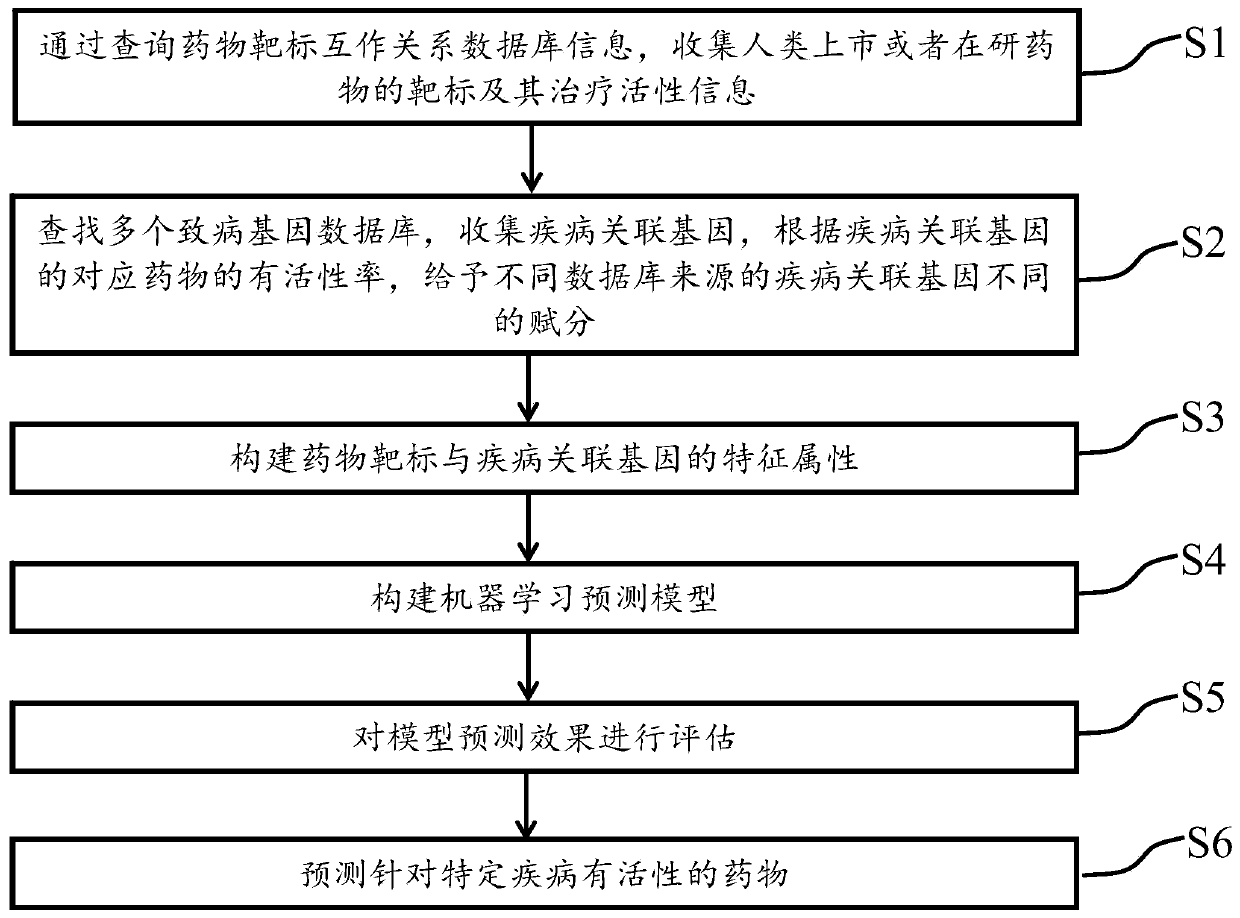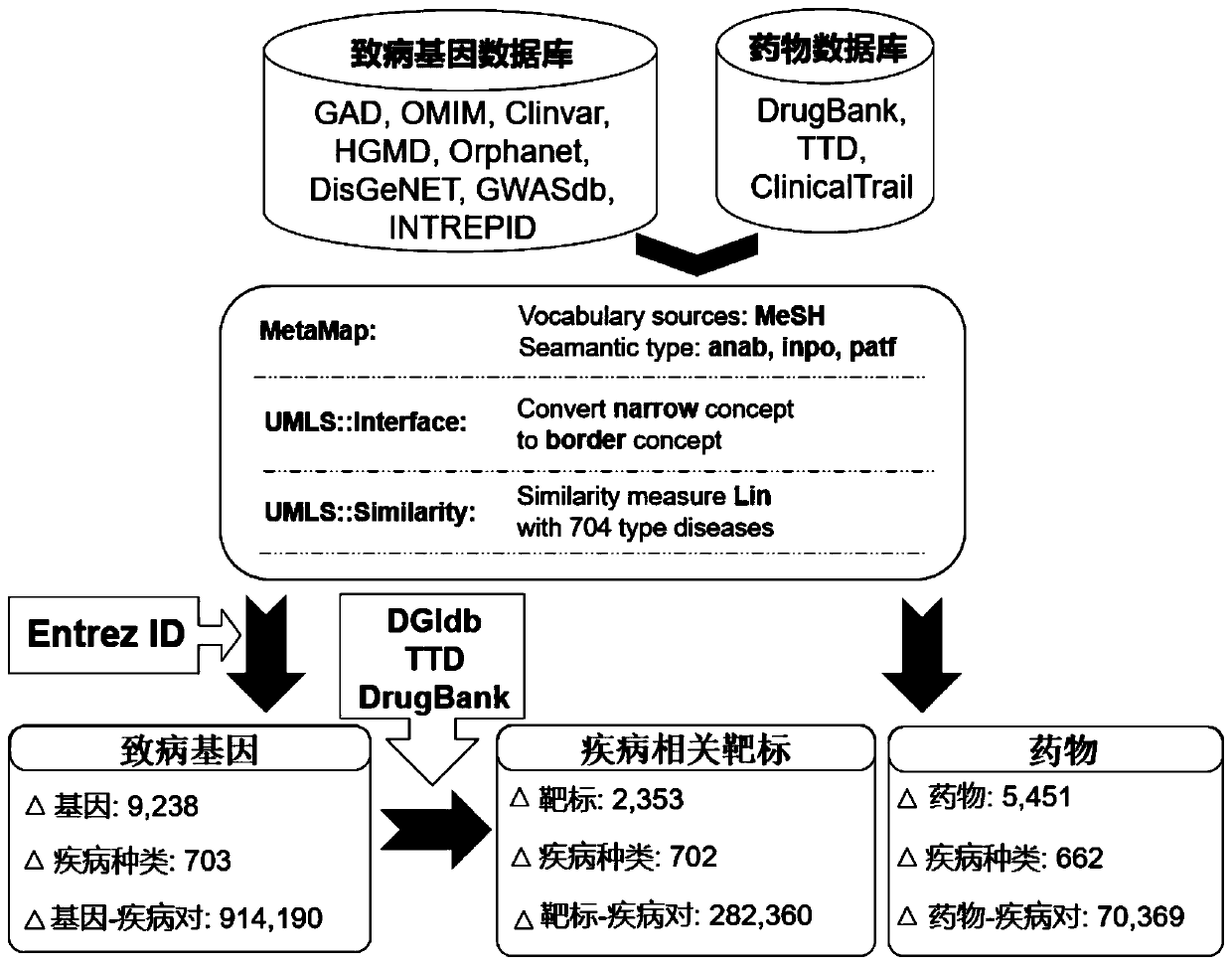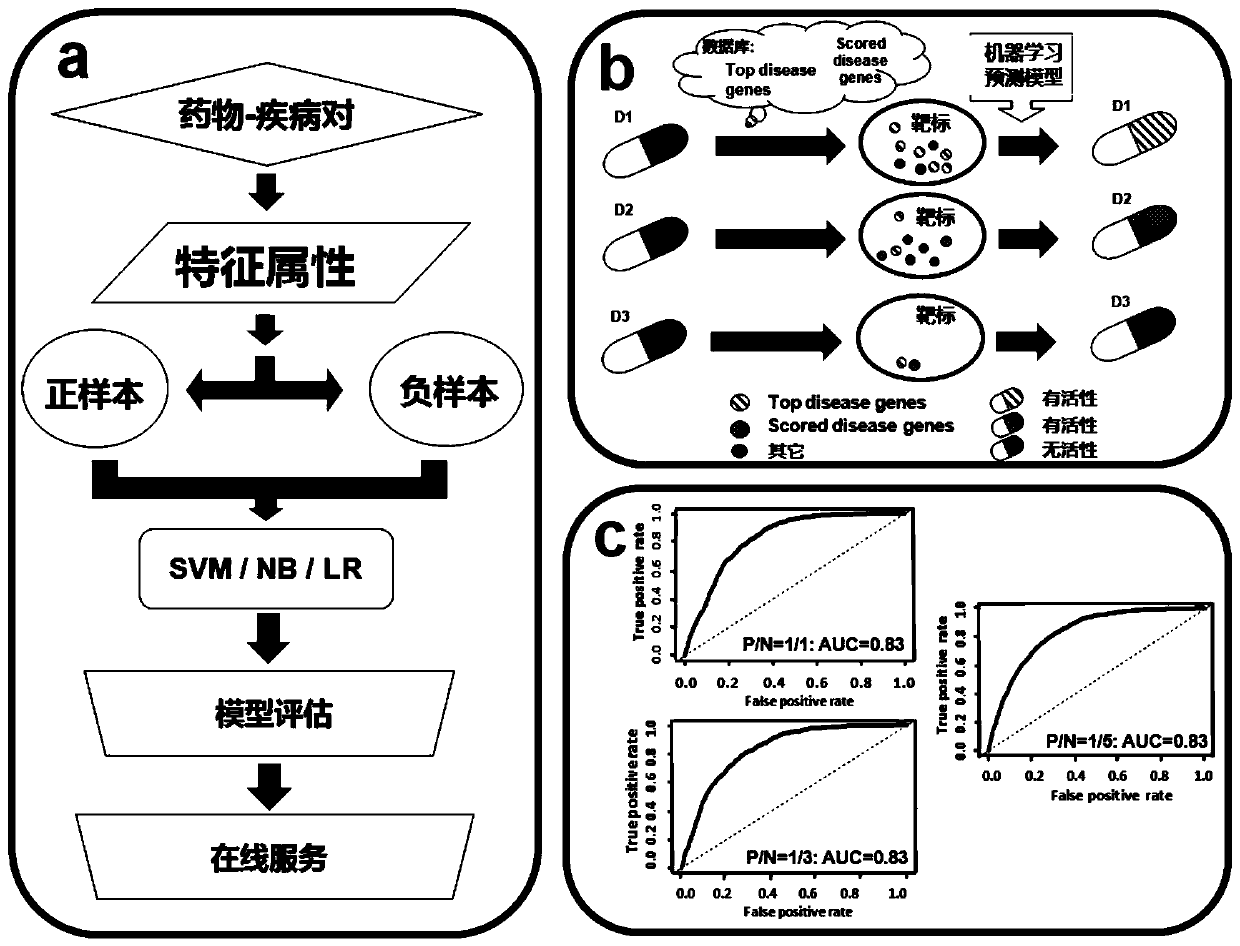A method for predicting drug activity and its application
A drug activity and prediction method technology, applied in the field of biomedicine, can solve problems such as insufficient guidance for new drug research and development, and achieve low cost, accurate results, and high efficiency
- Summary
- Abstract
- Description
- Claims
- Application Information
AI Technical Summary
Problems solved by technology
Method used
Image
Examples
Embodiment 1
[0061] Using the method of the present invention to predict drugs with activity in the treatment of bipolar disorder
[0062] figure 1 It is a flowchart of the method for predicting the drug activity of the present invention. Depend on figure 1 As can be seen, the predictive method of drug activity of the present invention comprises the following steps:
[0063] 1. Collect target and drug activity information of human marketed or drug candidates
[0064] Search drug target databases DGIdb, TTD and DrugBank to collect drug-target related information. Information about the activity of drugs on the market or under development is obtained from the three databases of DrugBank, TTD and ClinicalTrials. figure 2 It is a flow chart of data processing for obtaining drug activity and target information in the method for predicting drug activity of the present invention, wherein MetaMap, UMLS::Interface and UMLS::Similarity are standardized processes for disease description. Depend ...
Embodiment 2
[0107] Using the method of the present invention to predict drugs with activity in treating depression
[0108] Steps 1 to 5 of this embodiment are the same as in Embodiment 1, and the other steps are as follows:
[0109] 6. Predicting drugs with activity in treating depression
[0110] Input the four eigenvalues of 5,451 drugs corresponding to different diseases into the activity prediction model (including three algorithms of SVM, NB, and LR) for activity prediction. For each drug, we considered the drug to be potentially active in treating depression if the results of any two of the three algorithms predicted antidepressant activity. RESULTS: Antidepressant activity was predicted for 182 of 5,451 drugs. By querying the DrugBank, TTD, and ClinicalTrials drug activity databases, 68 (37%) of the 182 potential drugs had clinical antidepressant activity, while the proportion of antidepressant drugs in the background database was 283 / 5451 (5.2 %), so the effective rate of th...
Embodiment 3
[0112] Using the method of the present invention to predict drugs with activity in treating schizophrenia
[0113] Steps 1 to 5 of this embodiment are the same as in Embodiment 1, and the other steps are as follows:
[0114] 6. Drugs that are predicted to be active in the treatment of schizophrenia
[0115] Input the four eigenvalues of 5,451 drugs corresponding to different diseases into the activity prediction model (including three algorithms of SVM, NB, and LR) for activity prediction. For each drug, as long as the results of any two of the three algorithms predicted anti-schizophrenic activity, we considered the drug to have potential activity in the treatment of schizophrenia. The results showed that 161 of 5,451 drugs had predicted antischizophrenic activity. By querying the DrugBank, TTD and ClinicalTrials drug activity databases, 78 (48%) of the 161 potential drugs had clinical anti-schizophrenia activity, while the proportion of anti-schizophrenia drugs in the ba...
PUM
 Login to View More
Login to View More Abstract
Description
Claims
Application Information
 Login to View More
Login to View More - R&D
- Intellectual Property
- Life Sciences
- Materials
- Tech Scout
- Unparalleled Data Quality
- Higher Quality Content
- 60% Fewer Hallucinations
Browse by: Latest US Patents, China's latest patents, Technical Efficacy Thesaurus, Application Domain, Technology Topic, Popular Technical Reports.
© 2025 PatSnap. All rights reserved.Legal|Privacy policy|Modern Slavery Act Transparency Statement|Sitemap|About US| Contact US: help@patsnap.com



